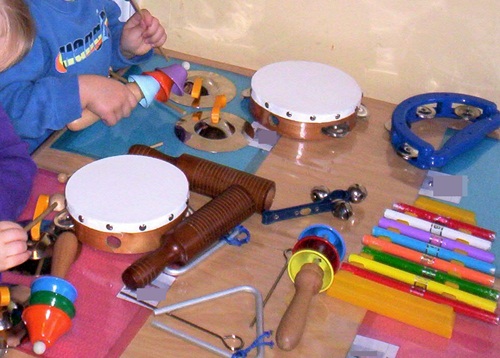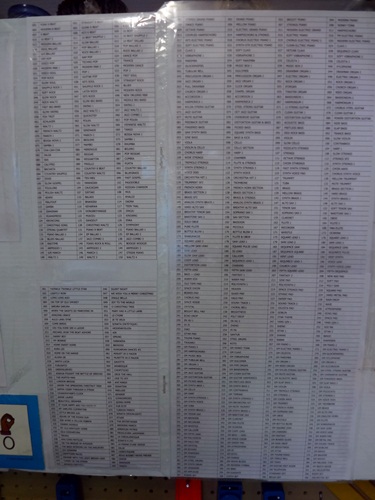There was a time, very early in my childcare career, when we had
‘music time’ as a regularly scheduled group activity. I’d bring out
various musical instruments and together the children I would listen to
music, play with the instruments, sing songs and do music and rhythm
exercises. It was a structured, adult led activity that required all
the children to participate in a music activity at a specific time.
Over time I rearranged and expanded our play space so that it could
include a music area – place where the musical instruments were always
available and could be used by one or more children at any time. We no
longer had a scheduled music time but the children could initiate a
group musical activity. I was available to guide and assist but the
children were not required to participate if they were otherwise
engaged. Some of the children spent much of their time immersed in
musical exploration. Others would come and go depending on their mood
and other interests.
The music area also included a small piano keyboard which became one
of the favourite musical instruments. Many of the children learned to
play their favourite melodies on this little piano and some began to
make connections between printed music and the corresponding keys on the
keyboard;
This little piano was popular but it was also annoying. This was not
a true piano keyboard – simply an electronic toy with major
limitations. It had a repertoire of recorded songs to listen to but not
play along with. While a song was playing if anyone touched a piano
key the song would stop – how frustrating! It also listed several
different instruments but each one was simply a slightly different
irritating digital tone which sounded nothing like the instrument it
claimed to be.
Recently I replaced this toy piano with a better keyboard – this is
the newly purchased item that I referred at in my last post. It has 90
recorded songs – that we can play along with – and 150 rhythms and 400 beautiful tones that sound similar to real instruments. It is a wonderful addition to our music area;
OK, so some of the tones are not so beautiful – or even musical – but
they are interesting. The children have made many discoveries about
this keyboard through experimentation with little help from me. In
fact, on a couple of occasions I’ve had to ask them how they did
something. One of these instances had nothing to do with music.
They were engaged in a ‘army’ dramatic play activity and used the
‘helicopter’ and ‘gunshots’ tones. They discovered that if they
selected ‘helicopter’ and held one key down the helicopter tone would
continue playing and they could select a second tone. Of course the
‘gunshot’ tone was then used to shoot down the helicopter. Not an
activity I would have initiated but it did require a fair amount of
cooperation and collaboration from the group of children involved.
I’ve printed and posted the entire list of songs, rhythms, and tones
so they are available for those who can or want to learn to read the
names and select specific songs or tones.
Currently the most popular song choice is Pachelbel’s ‘Canon’ which
has elicited discussions about what makes certain songs popular. We’ve
done some research into the history of many of these songs. The children
have identified some of the recorded songs as being ‘from’ movies and
television shows and are surprised to discover that these songs are ‘so
old’.
Another song that produces a lot of excitement is ‘The Wedding March’
which is always played during the numerous toy weddings and often the
children use the other instruments to play along as part of ‘the band’.
This is just one of the many ways the children can incorporate music
into their free play activities. They are so much more engaged in
musical activities when they have control over when and how the music is
used.





No comments:
Post a Comment